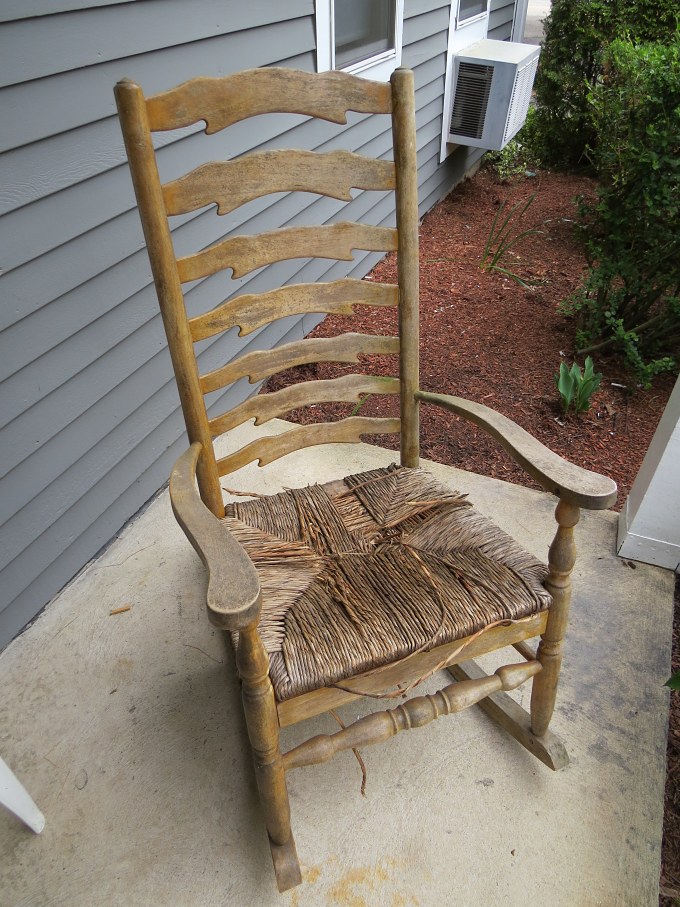The Blue View - Restoring a Rush Rocker
/There used to be a Canadian television series called Red Green. Red was a backwoods handyman, inventor, and philosopher whose solutions to problems invariably backfired and were always hilarious. One of his favorite sayings was, “If the women don't find you handsome, at least let them find you handy”. At my age, that's probably about all I can hope for.
It is unbelievably easy these days to pick up the knowledge necessary for just about any 'How-To' project. No matter how obscure the subject, there always seems to be half a dozen You Tube videos just a click away. A case in point was repairing Marcie's mom's rocking chair. As Marcie mentioned in her recent blog, the rush seat of Bea's chair had deteriorated so much over the past five winters that it was no longer useable. The varnished finish was pretty much gone as well, and it seemed like it might be a good project to keep me occupied during our extended stay here with Bea.
As is often the case when I start researching some subject on the internet, it is hard to stay focused and easy to get offtrack. It took me a good couple of hours to learn the difference between cane seats and rush seats, for example, as I got sidetracked onto a thread about the history of rush weaving (which, by the way, was historically made of seaweed), then to how seaweed was harvested, then to kelp harvesting on King Island where we were not too long ago, then to … well, you get the idea.
Modern rush material is made of paper, although it is still possible to get authentic seaweed rush. It is a very heavy paper rolled into a continuous, somewhat stiff cord. It comes in several diameters, and you can buy a large roll of it or smaller one pound rolls. I measured the seat and the diameter of the old rush material, and using the formulas provided by the supplier, it was simple to determine that I would need to buy two rolls of 5/16” rush cord. In addition, there were a couple of inexpensive tools needed – some wedges and pegs. The former make it easier to keep the weave tight and the latter help to weave the last few turns of the cord.
The heart of the seat of a rush chair is a simple wooden frame. The rush cord is soaked in water for a few seconds to make it pliable, then woven around the outside of the frame. The weaving process is simple and straightforward, with a pattern that is repeated until you run out of frame to weave. Since it is quite unwieldy to work with a roll that is a few hundred feet long, you work with 30 foot sections. The end of one section is tied with a reef or square knot (knot # 1204 in Ashley's Book of Knots
It took probably four or five hours to research the project, an hour to order the supplies, and half a day to weave the seat. The refinishing required a couple hours of sanding, and an hour a day for four days to apply the stain and polyurethane. Add a couple of hours to round up the refinishing supplies, and the total was around 18 man-hours.
The end results were pretty good in my estimation. The professional chair “re-caners” needn't worry about a new competitor, however. The cost of the supplies ($24 plus shipping for the rush supplies plus about $20 for the refinishing supplies) was more than Bea paid for the chair to begin with ($20 at the Salvation Army Thrift Store), and if you added in my time at even minimum wage, the cost of redoing the chair would probably be more than a new one would have cost. But it was a satisfying diversion, a new skill learned, and I'm thinking the women living at Bea's apartment may have even found me handy. Red Green would be proud.
Check out this YouTube link for a good “rush”.






